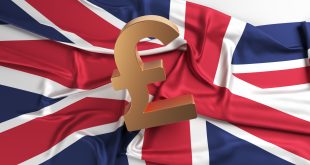The dollar rose slightly against the yen on Thursday after data showed a more-than-expected recovery in US retail sales in August, while the Swiss franc reached its highest level against the euro since 2015.
Retail Sales in the US stayed increased by 0.3% to $683.3 billion in August, the data published by the US Census Bureau showed on Thursday. This reading followed July’s decrease of 0.4% and came in better than the market expectation for a no-change.
The dollar made some gains after data showed that retail sales increased 0.3 percent last month, but demand for goods eased as the Federal Reserve raised interest rates. Economists polled by Reuters had expected the sales situation to remain unchanged.
The dollar index fell slightly on Friday but posted weekly gains as investors expected the Federal Reserve to continue aggressively tightening monetary policy. In contrast, the yuan fell below the seven barriers against the dollar.
The dollar made slight gains after US data showed improved consumer sentiment in September. The preliminary reading of the University of Michigan’s consumer confidence index came to 59.5 in September, up from 58.6 the previous month. Economists polled by Reuters had expected a preliminary reading for September of 60.0.
The dollar index, which measures the value of the US currency against a basket of six currencies including the euro, fell 0.1 percent on Friday to 109.68.
The index reached its highest level in two decades when it recorded 110.79 earlier this month. The index rose 0.6 percent during the week and about 15 percent this year so far.
Investors are largely anticipating a rate hike of 75 basis points at next week’s Federal Reserve meeting and possibly as much as 100 basis points.
In the cryptocurrency market, Ether fell to its lowest level since late July and was last down 2.8 percent, and Bitcoin was last down 0.47 percent to $19,598.
Earlier, the dollar’s rise pushed the yuan in trading outside the mainland below the level of seven against the dollar, for the first time in more than two years, Thursday night.
Similarly, the yuan within the mainland broke through the same barrier shortly after the markets opened on Friday. Data showed that China’s economy was surprisingly resilient in August, with factory production and retail sales growing more than expected. But the growing stagnation in the real estate sector affected the outlook.
The pound fell against the dollar again, reaching its lowest level in 37 years at $1.1351. And it fell in the latest trading 0.5% to 1.1416 dollars, while the euro rose 0.1% to 1.0008 dollars.
The dollar also fell 0.4 percent against the yen to 142.87, but ended the week up 0.2 percent, achieving gains for the fifth consecutive week.
Oil prices rose slightly on Friday after a leak in the Iraqi port of Basra appeared to restrict crude supplies, but it recorded a weekly loss amid fears of sharp interest rate increases, which is expected to curb global economic growth and fuel demand.
Brent crude futures rose 51 cents, to $91.35 a barrel, when they settled.
US West Texas Intermediate crude futures rose one cent, to $85.11, when they settled.
The two benchmarks fell about 2% for the week, partly because the strength of the US dollar makes oil more expensive for buyers who use other currencies.
Since the beginning of the third quarter until now, both crudes have fallen by about 20%, in the worst quarterly percentage decline since the start of the Corona pandemic in the first quarter of 2020.
And the Iraqi Basra Oil Company announced in a statement on Friday the gradual resumption of crude exports from the port of Basra, after containing a leak that halted operations on Thursday night.
The port includes four loading platforms with an export capacity of 1.8 million barrels per day.
Investors are preparing for a significant increase in US interest rates, which could lead to a recession and reduce fuel demand.
The Federal Reserve is widely expected to raise its benchmark overnight interest rate by 75 basis points at its September 20-21 policy meeting.
Market concern is also dominated by the International Energy Agency’s forecast of negligible growth in oil demand in the fourth quarter due to weak demand forecasts in China.
The UK retail sales arrived at -1.6% over the month in August vs. -0.5% expected and 0.3% previous. The core retail sales, stripping the auto motor fuel sales, dropped 1.6% MoM vs. -0.7% expected and 0.4% previous.
On an annualized basis, the UK retail sales plunged -5.4% in August versus -4.2% expected and -3.2% prior while the core retail sales slumped 5% in the reported month versus -3.4% expectations and -3.1% previous.
Main points (via ONS)
 Noor Trends News, Technical Analysis, Educational Tools and Recommendations
Noor Trends News, Technical Analysis, Educational Tools and Recommendations





